Assembly
It took a little time to get comfortable placing an electric pump into the water. Be sure to only plug this into a GFCI outlet and test the outlet regularly.
The pump in the parts list included an adapter for garden hoses. Connect one of the drinking water hoses to the pump. Consider zip tying the hose and cord together for easier management.
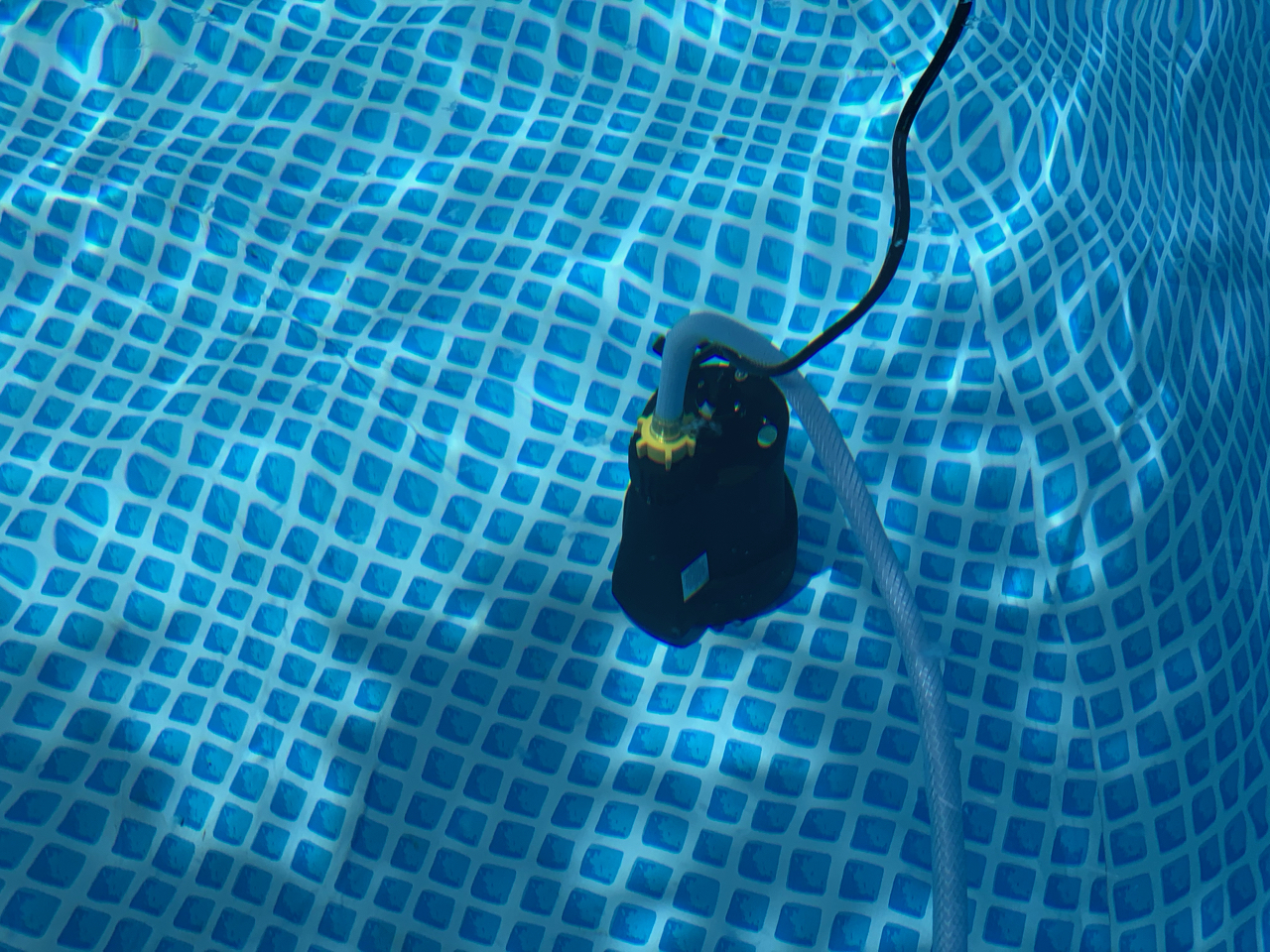
I placed the inlet filter after the first section of house from the pump, and attached the filter near the top of the pool so we can see when it gets dirty.
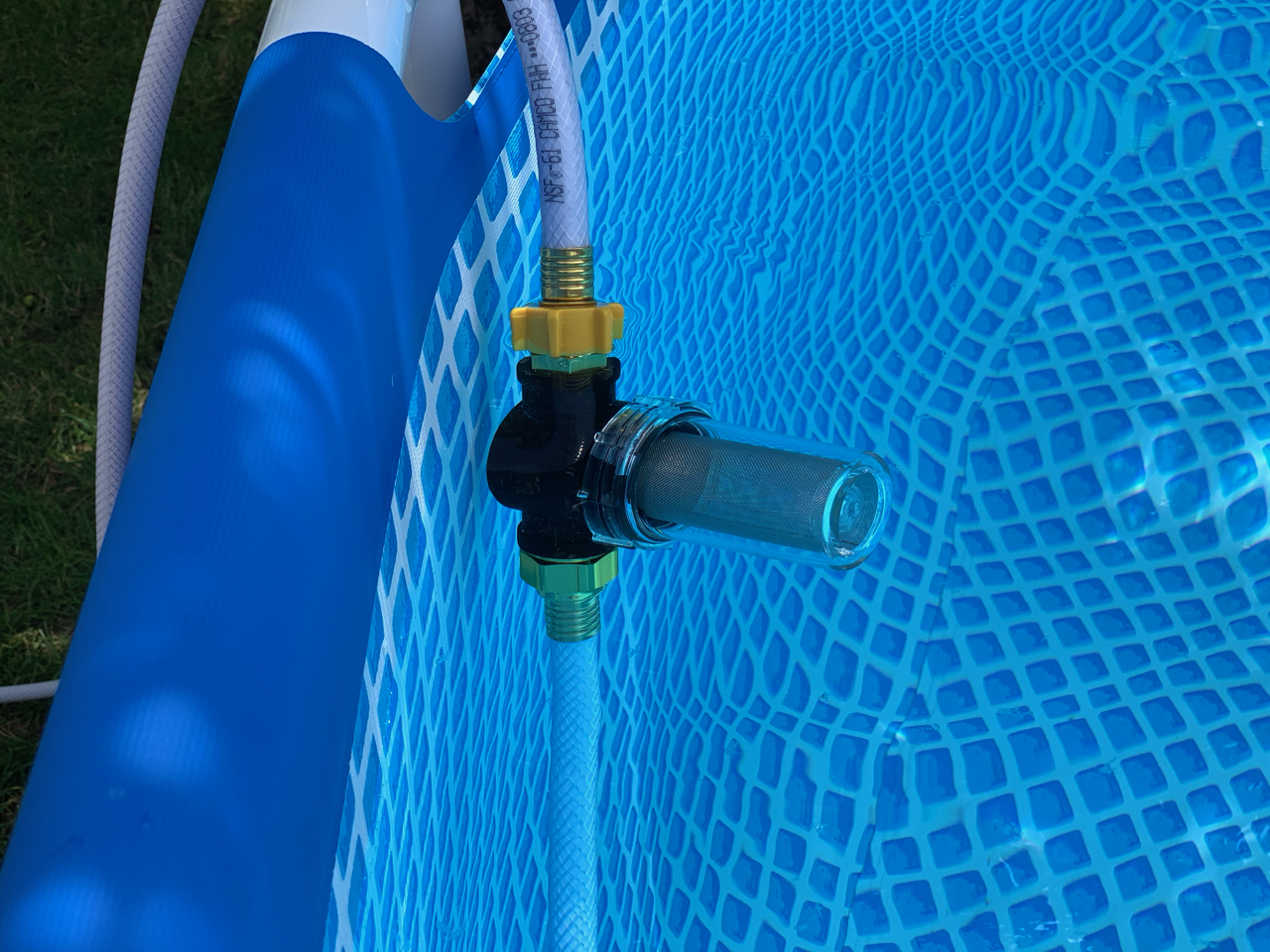
Here are the heater connections coming in from the water pump and inlet filter. There are two drinking water hoses connected in series going back to the pool with heated water. The propane connection is similar to what you would see for a barbeque or firepit.
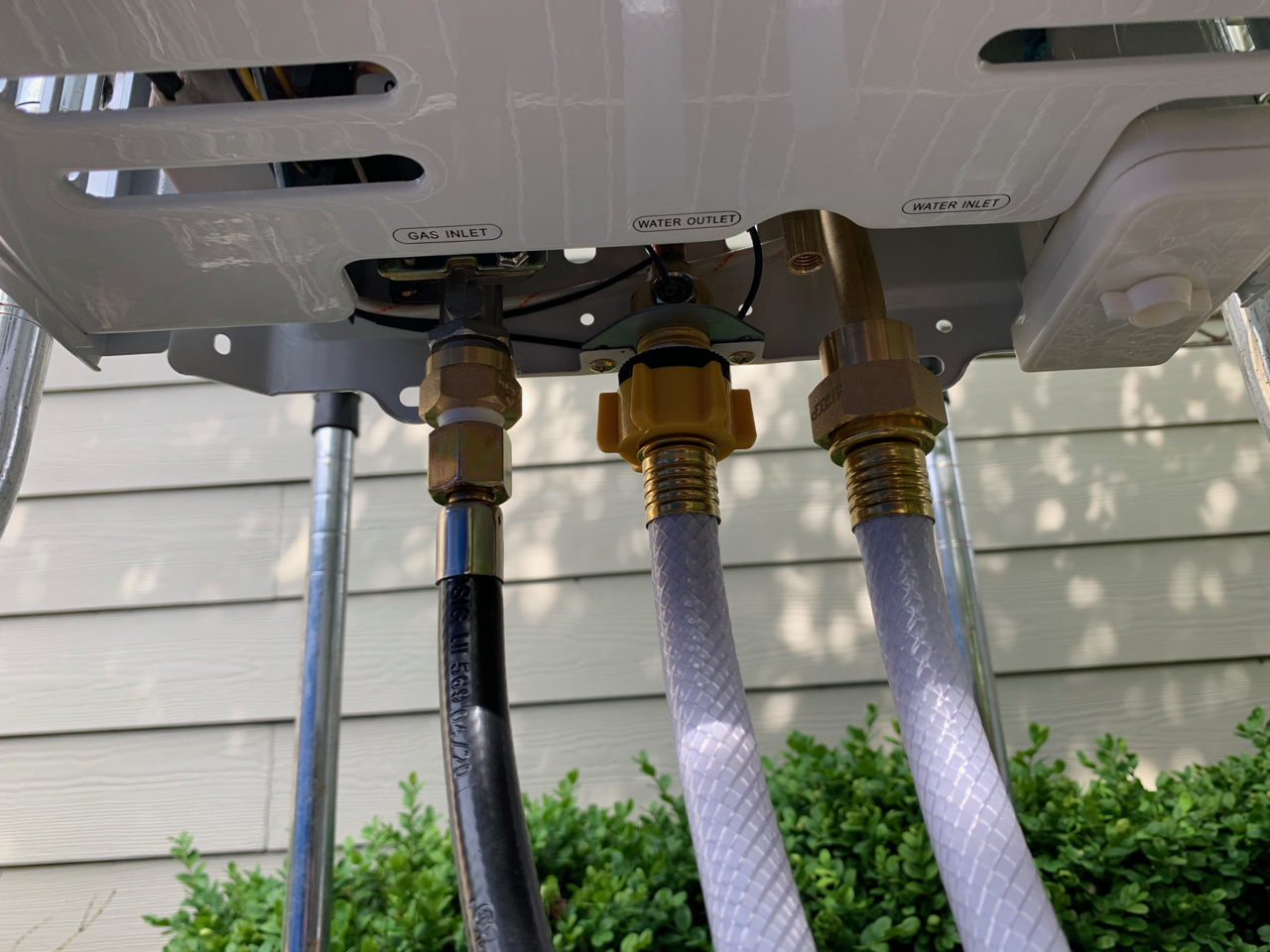
The heater came with various connection adapters for different kinds of hoses including garden hoses. These are the connections we settled on that fit best with the hoses we purchased.
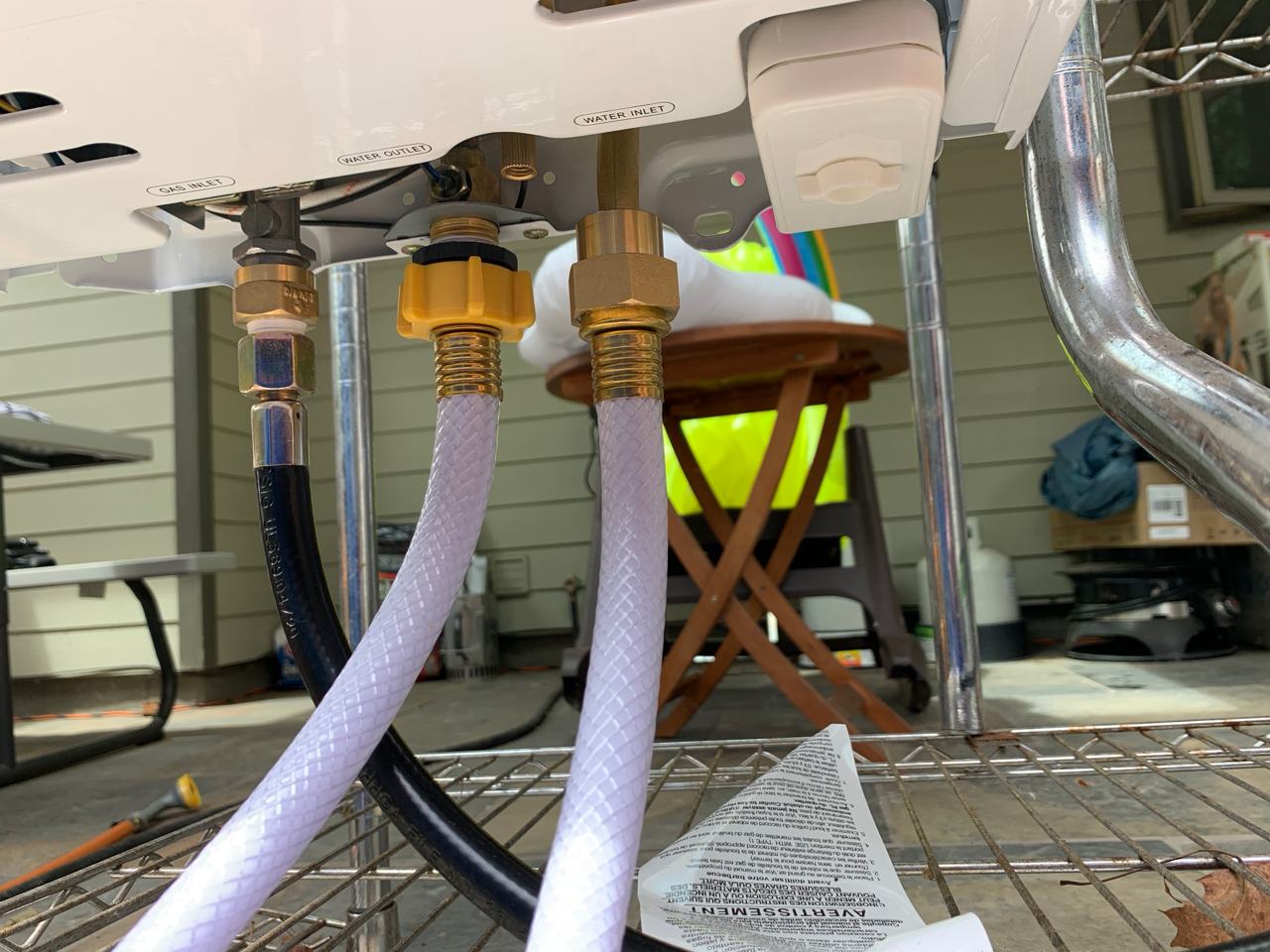
The propane regulator came with the water heater. This is a 30 pound (a little over 7 gallons) cylinder.
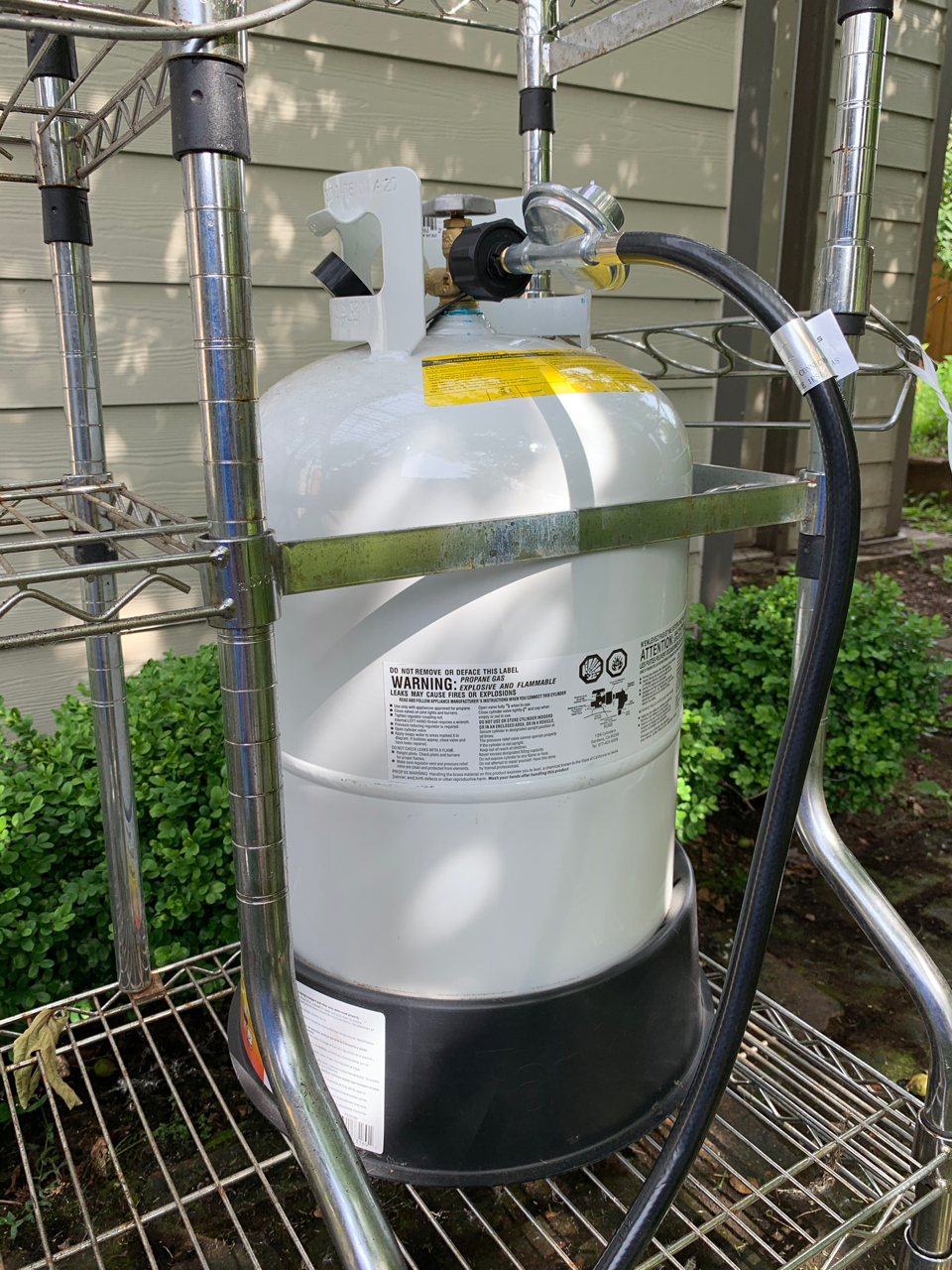
Testing
Water
- Connect one hose to the pump and place the pump in the water. Power the pump and check the flow with one hose.
- Add the inlet filter and check the flow again.
- Add the second hose and connect that to the heater.
- Connect the hoses for the outbound hot water and place in the pool.
- Connect the propane hose to the heater and tank. Leave the tank turned off.
- Power the pump again and check for leaks. You should have water leaving the outbound hose.
Heat
- Stop the pump.
- Check the settings on the heater. Start at midway settings.
- Put batteries in the heater. Turn on the propane. Start the pump.
- Listen for the pump flow, heater spark igniter, and hopefully sound of ignition.
- Check the your heater’s display for temperature.
- Check the outbound hose for hot water.
- Let things run, adjust the settings and check again for leaks.